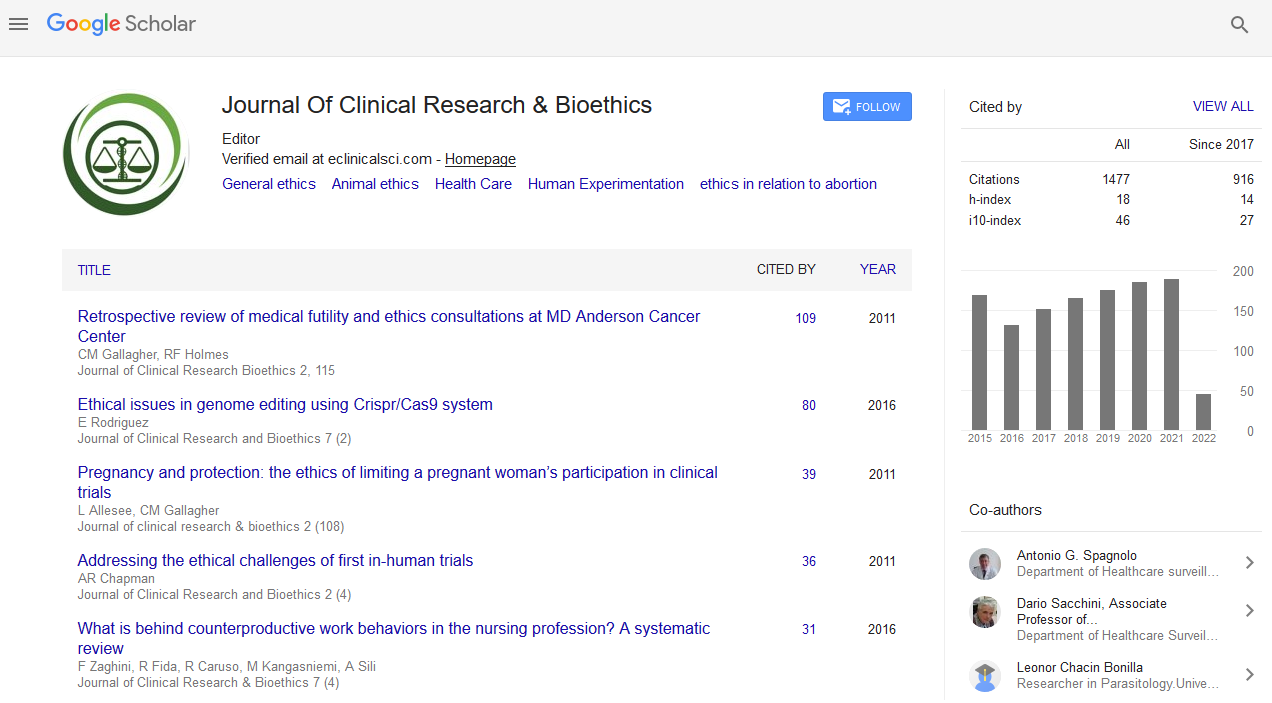PMC/PubMed Indexed Articles
Indexed In
- Open J Gate
- Genamics JournalSeek
- JournalTOCs
- RefSeek
- Hamdard University
- EBSCO A-Z
- OCLC- WorldCat
- Publons
- Geneva Foundation for Medical Education and Research
- Google Scholar
Useful Links
Share This Page
Journal Flyer

Open Access Journals
- Agri and Aquaculture
- Biochemistry
- Bioinformatics & Systems Biology
- Business & Management
- Chemistry
- Clinical Sciences
- Engineering
- Food & Nutrition
- General Science
- Genetics & Molecular Biology
- Immunology & Microbiology
- Medical Sciences
- Neuroscience & Psychology
- Nursing & Health Care
- Pharmaceutical Sciences
Abstract
Parental, Medical, and Sociological Responsibilities: “Octomom” as a Case Study in the Ethics of Fertility Treatments
The advent and development of various forms of fertility treatments has made the dream of parenthood concrete for many who cannot achieve it through traditional modes of conception. Yet, like many scientific advances, fertility treatments have been misused. Although still rare compared to the birth of singletons, the number of triplets, quadruplets, and other higher-order multiple births have quadrupled in the past thirty years in the United States, mostly due to the increasingly prevalent use of fertility treatments. In contrast, the number of multiple births has decreased in Europe in recent years, even though 54% of all assistant reproductive technology cycles take place in Europe, most likely because official guidelines have been implemented throughout several countries geared towards reducing the occurrence of higher-order multiple births.1 The gestation of multiple fetuses can result in dire consequences for them. They can be miscarried, stillborn, or die shortly after birth. When they do survive, they are often born prematurely and with a low birth weight, and may suffer from a lifetime of physical or developmental impairments.
The objective of this paper is to explore the moral dimensions of certain uses of fertility treatments in light of the known dangers that may result from higher-order multiple births. I will do this by mainly focusing on the now infamous case of Nadya Suleman, also known as “Octomom.” I argue that Suleman and her fertility physician, Michael Kamrava, both violated important duties and virtues in the creation of her octuplets, but that my criticism of their actions equally applies to many other questionable uses of reproductive technology. Moreover, I will show that the responsibility for curbing the rise of high-order multiple births falls on the shoulders of not only patients and their doctors, but also the community of fertility physicians in general, insurance companies, and even the media.


